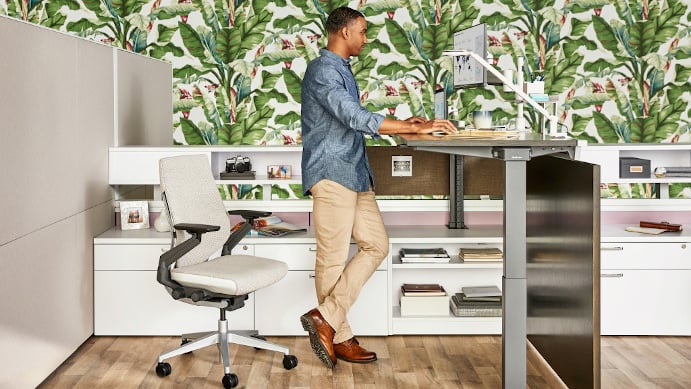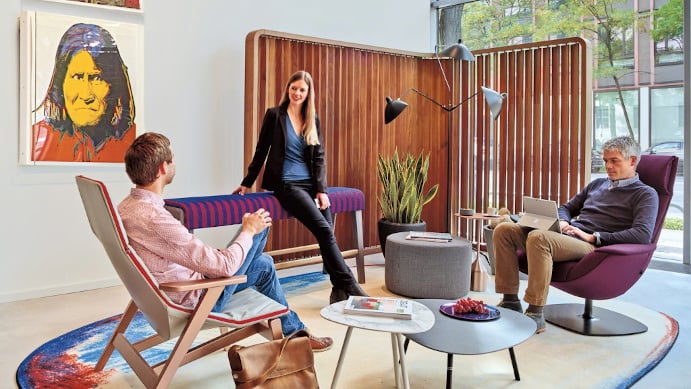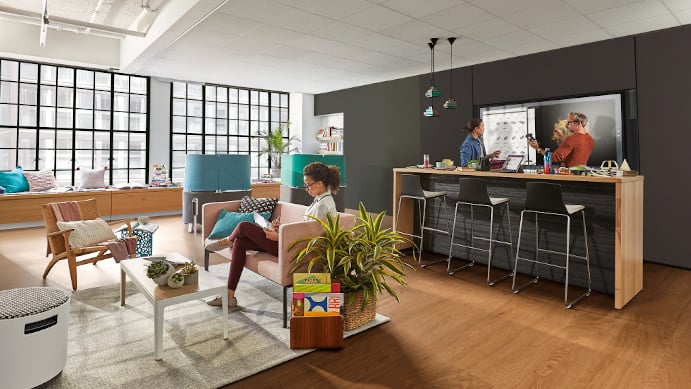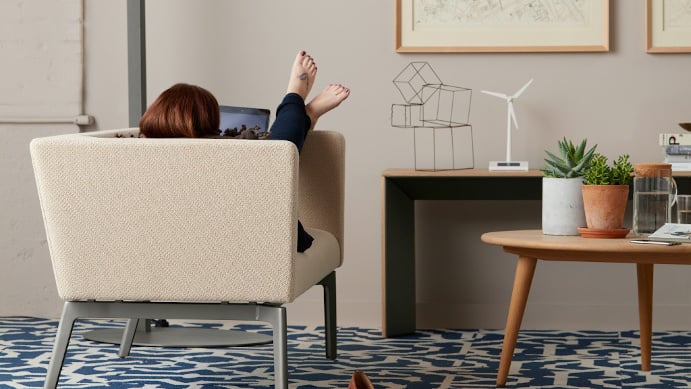It’s all about a great employee experience.

Today, some people shop for employers like they do for consumer products. It’s not just the type of work, salary or a company’s prestige that influence decision making. People are looking for a sense of purpose at work and ask themselves, “Do I love my job, or do I just like it? Does my employer share my values? What are others saying about where they work? My friend really loves it there; maybe I would, too. What is their office like?” There are so many factors at play when someone is trying to choose where they want to work.
At the same time, the competition for talent has never been more fierce. The global unemployment rate is as low as it’s been in over a decade, according to the International Labour Organisation, and is even lower among the world’s wealthiest countries, which means people have options. Every industry is looking for new ways to lure top talent and keep them. The problem is even more heightened for STEM—science, technology, engineering and maths—positions. For example, in India, the shortage of skilled STEM talent doubled from 2014 to 2018, according to job site Indeed, and the U.S. Bureau of Labor Statistics estimates the rate of growth for STEM positions is quadruple that of other jobs. At this rate, 1 million to 2.5 million jobs will go unfilled by 2020, most of them in the engineering and computer science fields.

“It’s cliche to say people are our most important asset,” explains Laurent Bernard, vice president, Global Talent Management at Steelcase. “But, without the right people there would be no new big ideas or game-changing products — your organisation simply can’t survive. Yet, sometimes we forget to think strategically about creating an employee experience that will influence people’s decisions about where to work and how engaged they are likely to be. Traditionally, organisations have thought about their offices as a place to park their people. Instead the office should be strategically leveraged to encourage new social norms and a mindset that will lead to the behaviours that enhance innovation. Over time, this will shape the culture you desire, as well as create the type of work experience people are seeking.”
Figure out what employees want
But a great employee experience doesn’t come easy. Companies with low engagement scores often implement experience initiatives before asking employees what they want. A recent Steelcase study of global office workers found just over half of people (51 percent) say they need an escape from working in the same place during their day, whether they were alone or with others. Yet, 53 percent of employees say they can’t find the right types of space they need. What else are they looking for? They’re seeking deeper relationships with colleagues and believe informal spaces can help build more trust (43 percent).

This data is telling; people are unsatisfied. Traditional perks like higher salaries aren’t enough to convince people to join a new company or stay with the one they’re already with. For Gen Z (born 1994–2008), the number on their paycheck isn’t even a top-three priority, according to the 2017 Change Generation Report conducted by the Lovell Corporation. “One of the biggest shifts between generations is Generation Z’s emphasis on passion in their work and career success,” the study states. “For the first time, passion is ranked as one of the top three work values. Employers will be required to keep their spark alive in the workplace—ensuring work speaks to individual interests, provides growth and aligns with employee values.”
A holistic approach
Jacob Morgan, author of “The Employee Experience Advantage: How to Win the War for Talent by Giving Employees the Workspaces they Want, the Tools they Need, and a Culture They Can Celebrate” is an expert on the topic. After extensive research and interviewing over 150 global leaders, he identified three factors that are critical for companies to invest in to create an optimal employee experience—physical space, culture and technology.
But very few organisations think about these three factors holistically. They are usually managed by separate teams with separate budgets. Human resources, information technology and facility leaders rarely sit in a room to talk through how their roles intersect to build the places where people want to work. The magic happens, says Morgan, when “there is an overlap between employees’ expectations, needs and wants and organisational design of employee expectations, needs and wants.” This overlap requires looking at people, place and technology through a holistic lens.

Why it matters
Morgan calls companies that prioritise all three aspects of the employee experience Experiential Organisations, defining each as, “one that has been (re)designed to truly know its people and has mastered the art and science of creating a place where people want, not need, to show up to work.” To uncover what Experiential Organisations do right, Morgan led the creation of the Employee Experience Index, a survey that measures companies on how well they invest in physical space, culture and technology, and conducted it at over 250 global organisations. Experiential Organisations had more than four times the average profit and more than two times the average revenue.

Creating a great employee experience
The first step to creating a great employee experience is deeply understanding what people want. By listening to people and observing how they work, companies can then focus on a holistic approach to meeting people’s needs for sustained wellbeing, smart and connected technology, and access to a diverse range of spaces. With this approach companies can create places where people want to work, gaining an edge over competitors when searching for the best and brightest.
Here are some ideas from Steelcase application designers that can help your organisation create a great employee experience.
01 Offer Choice + Control
Give people the freedom to work wherever they want by providing a range of spaces with different tools and atmospheres that meet their changing needs throughout the day.
02 Make it Authentic
Create places where people feel free to be themselves. Lighting, materiality, informal spaces and natural elements are powerful influences on behaviour and communicate company brand and culture.
03 Keep Them Nourished
Think about physical and emotional needs. Great coffee and healthy food options signal that wellbeing is a priority. WorkCafés and coffee bars give people a place to meet for coffee and get to know each other better. Stronger relationships create stronger ideas, both of which increase team synergy and creativity.
04 Provide Top Technology
Without easy-to-use, accessible technology, workers can’t do their jobs and often get frustrated and distracted. It’s important to provide both mobile devices and thoughtfully integrated large-scale technology in spaces to make it easy to share ideas and information—anywhere.
05 Support Solitude
Help keep distractions low with respite spaces where individuals can rejuvenate, take a private phone call or focus on heads-down work throughout the day.
06 Keep them Connected to Coworkers and Community
Invest in diversity, inclusion and community outreach opportunities. These groups give employees a chance to form a sense of belonging to the company and feel that what they do and who they work for serve a larger purpose.









